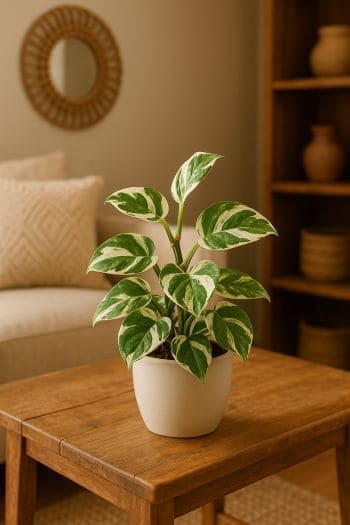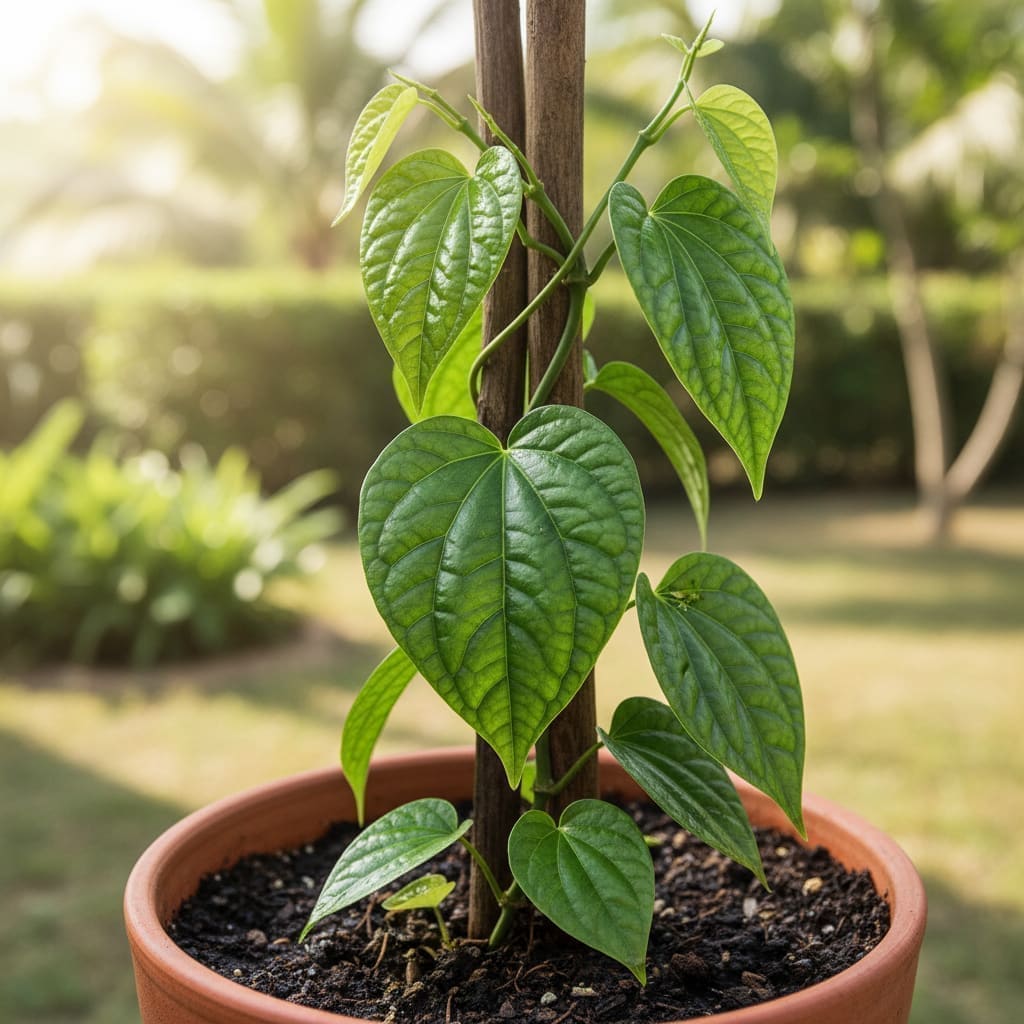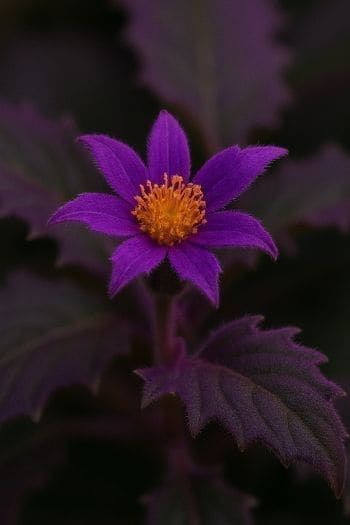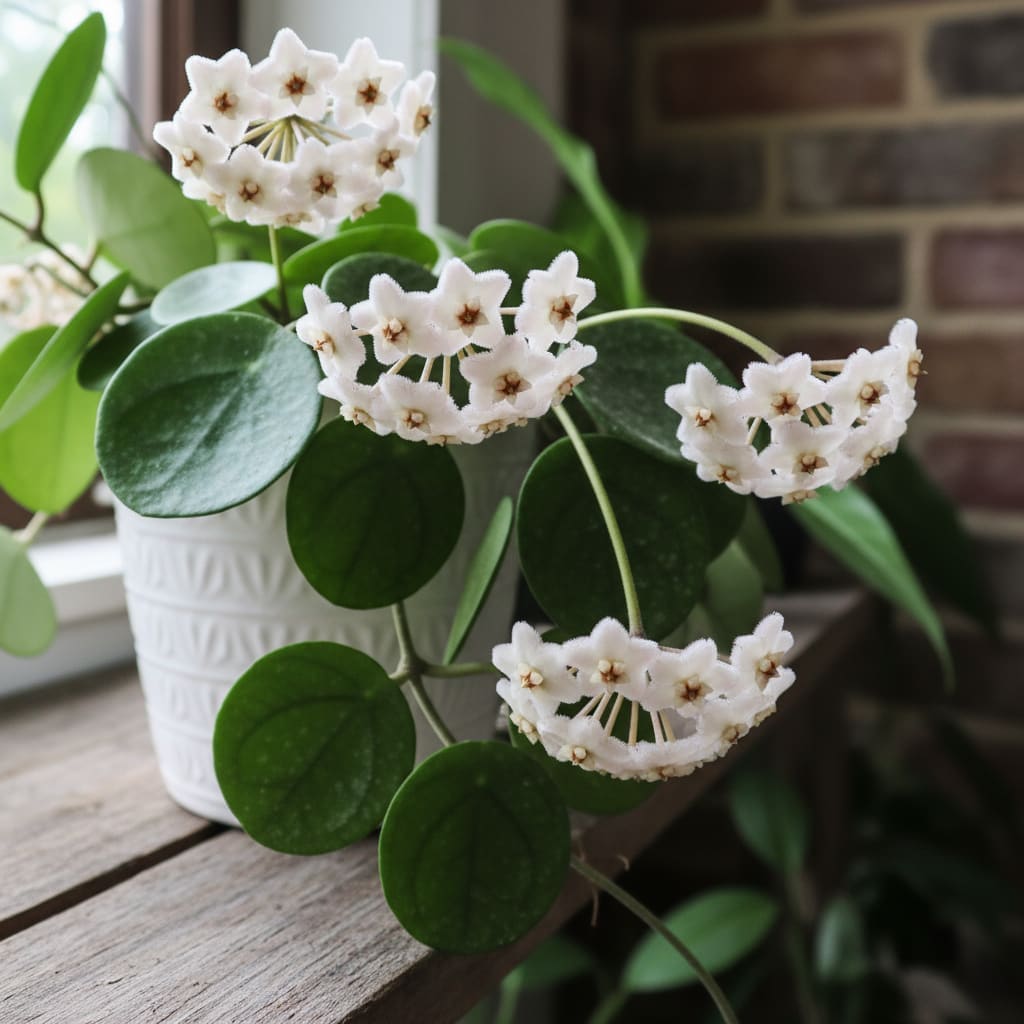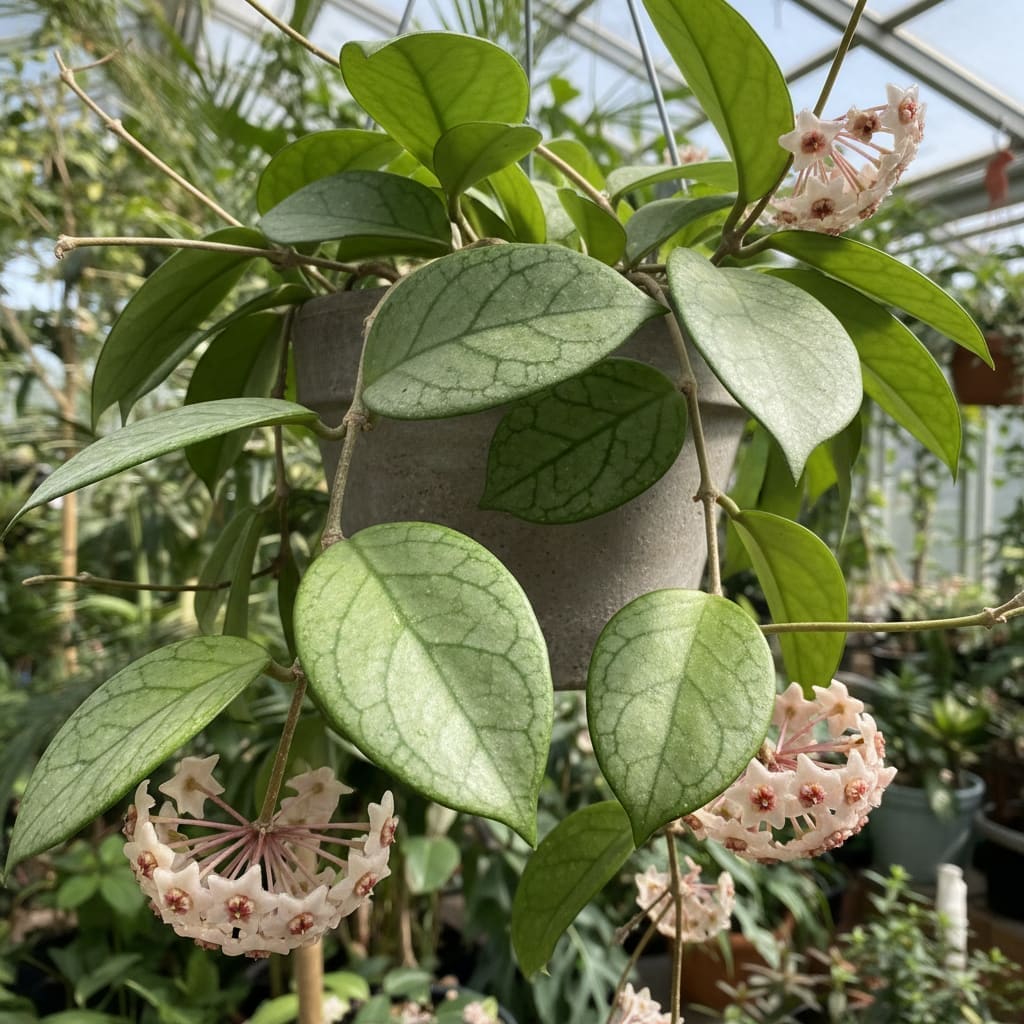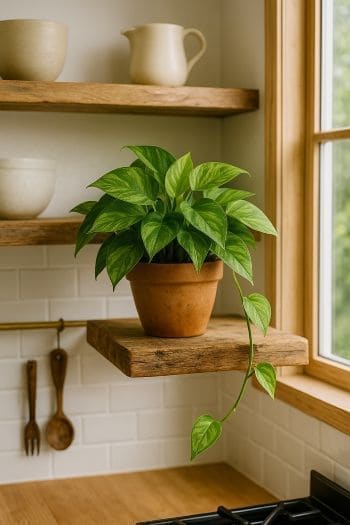Epipremnum aureum ‘N’Joy’ Care & Growing Guide
Overview
Epipremnum aureum ‘N’Joy’, commonly known as the N’Joy Pothos, is a variegated cultivar of the popular pothos plant native to Southeast Asia. Known for its compact growth and striking green-and-white foliage, this variety is one of the slowest-growing pothos types, making it ideal for plant lovers who prefer a low-maintenance, tidy houseplant. Its trailing or climbing habit makes it versatile for hanging baskets, shelves, or trained on supports.
Identification & Growth Habit
The N’Joy Pothos features small to medium-sized heart-shaped leaves with crisp white and cream variegation against a green background. The variegation is more pronounced in bright, indirect light. It grows as a trailing vine or can be encouraged to climb when provided with a moss pole, trellis, or other vertical support. Because it grows more slowly than other pothos varieties, it requires less frequent pruning and is less likely to become unruly.
Light & Placement
Place your N’Joy Pothos in a location with bright, indirect light to maintain its vibrant variegation. While it can tolerate lower light conditions, the plant may produce more green leaves and become leggy. Avoid direct midday sun, which can scorch the foliage. East-facing windows or a few feet back from a south- or west-facing window are good placements.
Watering & Humidity
Water when the top 2–3 inches of soil have dried out. Use your finger to check moisture before watering. Always allow excess water to drain from the pot to prevent root rot, and never let the plant sit in standing water. The N’Joy Pothos prefers humidity levels between 50% and 70%. In drier environments, increase humidity with a humidifier, pebble tray, or by grouping plants together.
Soil & Repotting
Use a well-draining potting mix containing peat moss, perlite, or coconut coir. A mix formulated for aroids or houseplants works well. Ensure the pot has drainage holes. Repot every 2–3 years or when roots begin to circle the pot, preferably in spring. Since this is a slow grower, it will not require frequent repotting.
Fertilizing
Feed monthly during spring and summer with a balanced liquid fertilizer diluted to half strength. Avoid fertilizing in fall and winter when the plant’s growth naturally slows. Overfertilizing can lead to salt buildup and leaf burn, so flush the soil with water occasionally to remove excess salts.
Pruning & Training
Pruning helps maintain shape and encourages fuller growth. Use clean, sharp scissors or pruners to remove leggy or damaged stems just above a node. For a climbing display, train the plant onto a moss pole or trellis, securing stems with plant ties. For a trailing look, allow vines to cascade from shelves or hanging baskets.
Propagation
Step-by-Step Stem Cutting Method
- Choose a healthy vine with at least 2–3 leaves.
- Using sterilized scissors, cut just below a node (the point where a leaf joins the stem).
- Remove the leaf closest to the cut end to expose the node.
- Place the cutting in a jar of clean water or directly into moist, well-draining soil.
- If rooting in water, change the water every few days to keep it fresh.
- Once roots are 1–2 inches long, transplant water-rooted cuttings into soil.
- Keep the soil lightly moist until the cutting is established.
Common Problems
- Yellowing leaves: Often caused by overwatering or poor drainage. Check soil moisture and adjust watering frequency.
- Brown leaf tips: May indicate low humidity, underwatering, or excess fertilizer salts.
- Pests: Susceptible to mealybugs, spider mites, and scale. Treat with insecticidal soap or neem oil, and isolate the plant during treatment.
- Leggy growth: Usually due to insufficient light. Move to a brighter location with indirect sunlight.
Toxicity & Pet Safety
The N’Joy Pothos is toxic to cats, dogs, and humans if ingested. It contains calcium oxalate crystals that can cause irritation of the mouth and digestive tract. Keep out of reach of pets and children.
Styling & Decor Tips
- Display in a hanging basket to showcase its trailing vines.
- Train up a moss pole for a vertical accent in small spaces.
- Place on open shelving where vines can cascade for a lush effect.
- Combine with other variegated plants for a striking foliage contrast.
Varieties & Cultivars
The N’Joy Pothos is a distinct cultivar of Epipremnum aureum. Related varieties include:
- Marble Queen: Larger leaves with cream marbling.
- Manjula: Broad, wavy leaves with cream, silver, and green variegation.
- Pearls and Jade: Smaller leaves with white and gray-green variegation.
Buying Tips & Maturity
When purchasing, look for plants with firm, vibrant leaves and no signs of pests or yellowing. Check the undersides of leaves for insects. The N’Joy Pothos is slow-growing, so a fuller plant may take a few years to develop from a small starter. If you want an immediate impact, choose a plant with multiple vines already established.
Seasonal Care
- Spring/Summer: Active growth period. Increase watering frequency as needed, fertilize monthly, and consider repotting if root-bound.
- Fall/Winter: Growth slows. Reduce watering and stop fertilizing. Keep away from cold drafts and maintain temperatures above 50°F (10°C).
FAQ
How fast does N’Joy Pothos grow?
It is one of the slowest-growing pothos cultivars, often producing new leaves at a modest pace compared to other varieties.
Can N’Joy Pothos live in low light?
Yes, but variegation may fade and growth may become leggy. Bright, indirect light is best for maintaining coloration.
How often should I water my N’Joy Pothos?
Water when the top 2–3 inches of soil are dry, ensuring excess water drains away.
Is N’Joy Pothos safe for pets?
No. It is toxic to cats and dogs if ingested and should be kept out of their reach.
Can I grow N’Joy Pothos outdoors?
In warm, frost-free climates, it can be grown outdoors in shaded areas. In cooler regions, keep it as a houseplant.
Source: The Spruce – N’Joy Pothos Growing Guide
Troubleshooting Scenarios
- Sudden leaf drop: Often due to abrupt environmental changes such as relocation, temperature swings, or drafts. Stabilize conditions and avoid moving the plant frequently.
- Faded variegation despite good light: Could be a sign of nutrient deficiency; check fertilization schedule and consider a balanced feed during the growing season.
- Wilting even with moist soil: May indicate root rot; inspect roots for mushiness, trim affected parts, and repot in fresh, well-draining soil.
Advanced Pruning & Training
For a denser, bushier N’Joy Pothos, pinch back new growth tips regularly to encourage branching. To create a living wall effect, mount a series of moss poles or trellises and weave vines horizontally as they grow. For a topiary-style display, train vines around a circular or spiral frame, securing them gently with soft ties.
Pest & Disease Identification
- Mealybugs: White, cottony clusters on stems and leaf joints.
- Spider mites: Fine webbing and speckled, pale leaves.
- Scale insects: Brown, shell-like bumps on stems and undersides of leaves.
- Root rot: Blackened, mushy roots with foul odor.
Companion Plant Ideas
Pair N’Joy Pothos with plants that enjoy similar light and humidity, such as:
- Philodendron hederaceum: Complementary heart-shaped leaves with solid green tones.
- Satin Pothos (Scindapsus pictus): Silvery variegation that contrasts with N’Joy’s crisp white.
- Peace Lily (Spathiphyllum): Adds vertical interest and white blooms to echo variegation.
Indoor Styling Vignettes
In a modern minimalist space, place the N’Joy Pothos in a matte white ceramic pot on a floating shelf, allowing vines to trail in clean lines. For a bohemian look, hang it in a macramé plant hanger near a window alongside trailing string-of-hearts and ferns. In an office, train it up a compact trellis in a desktop planter to bring greenery without taking up excessive space.
